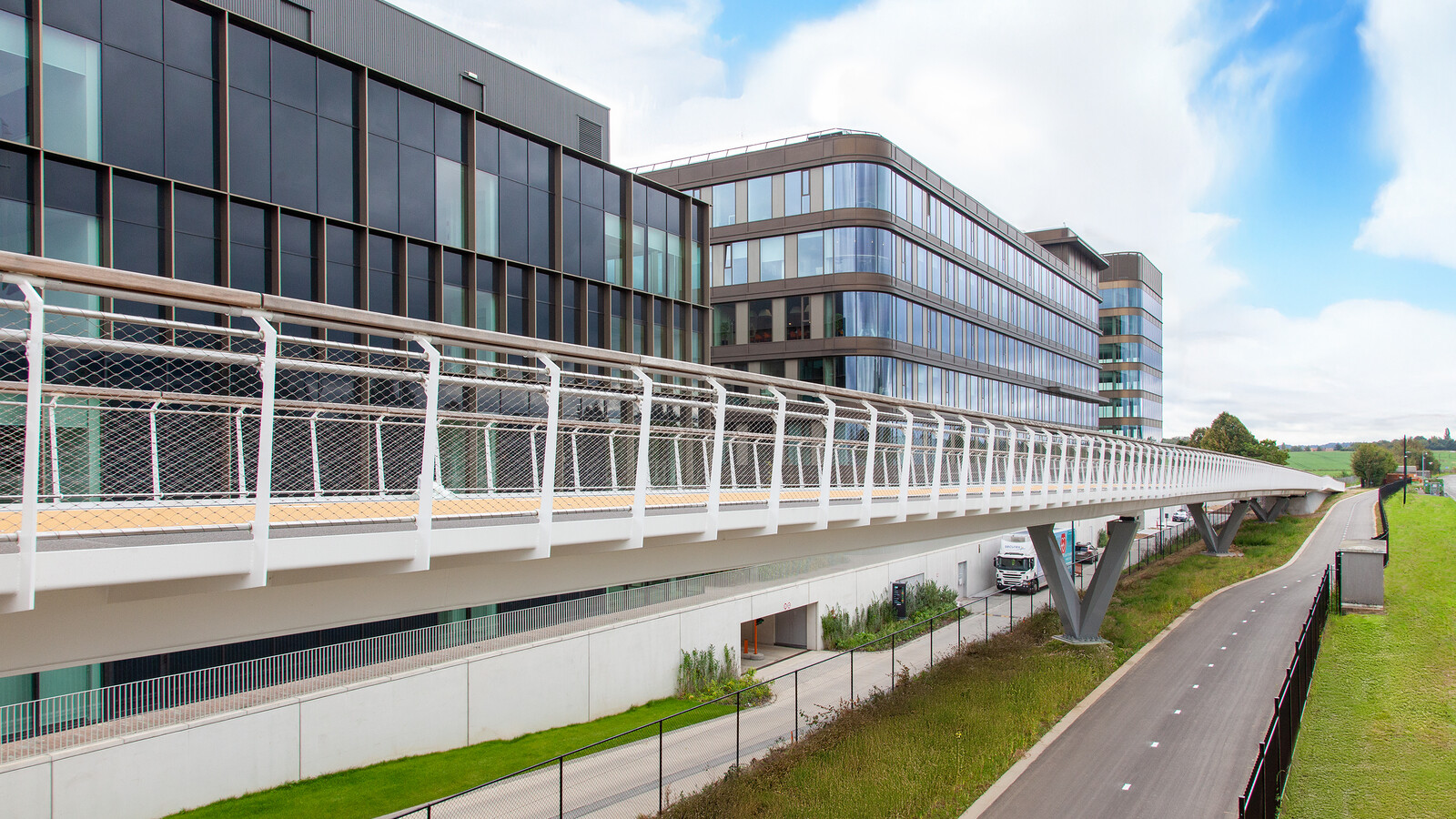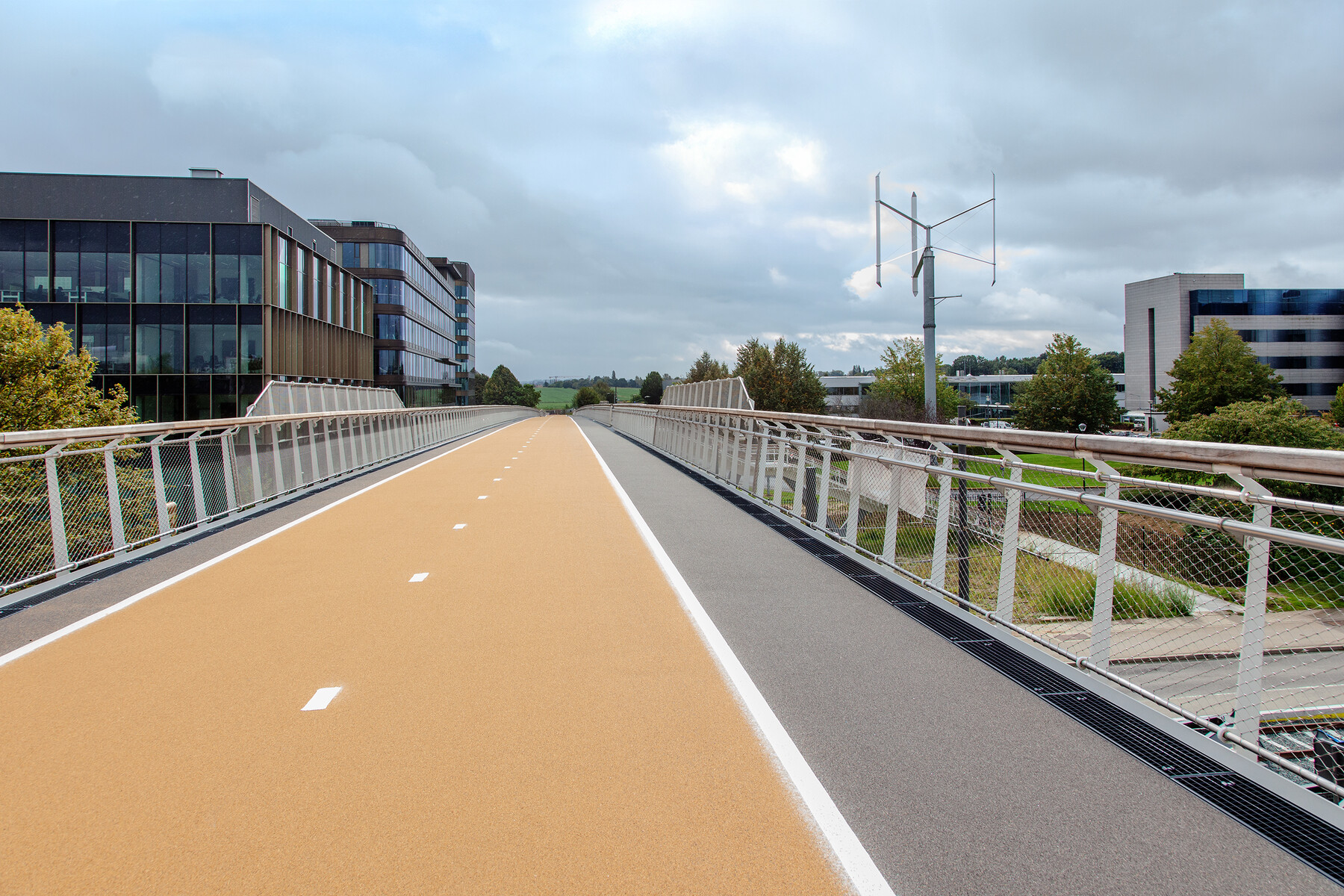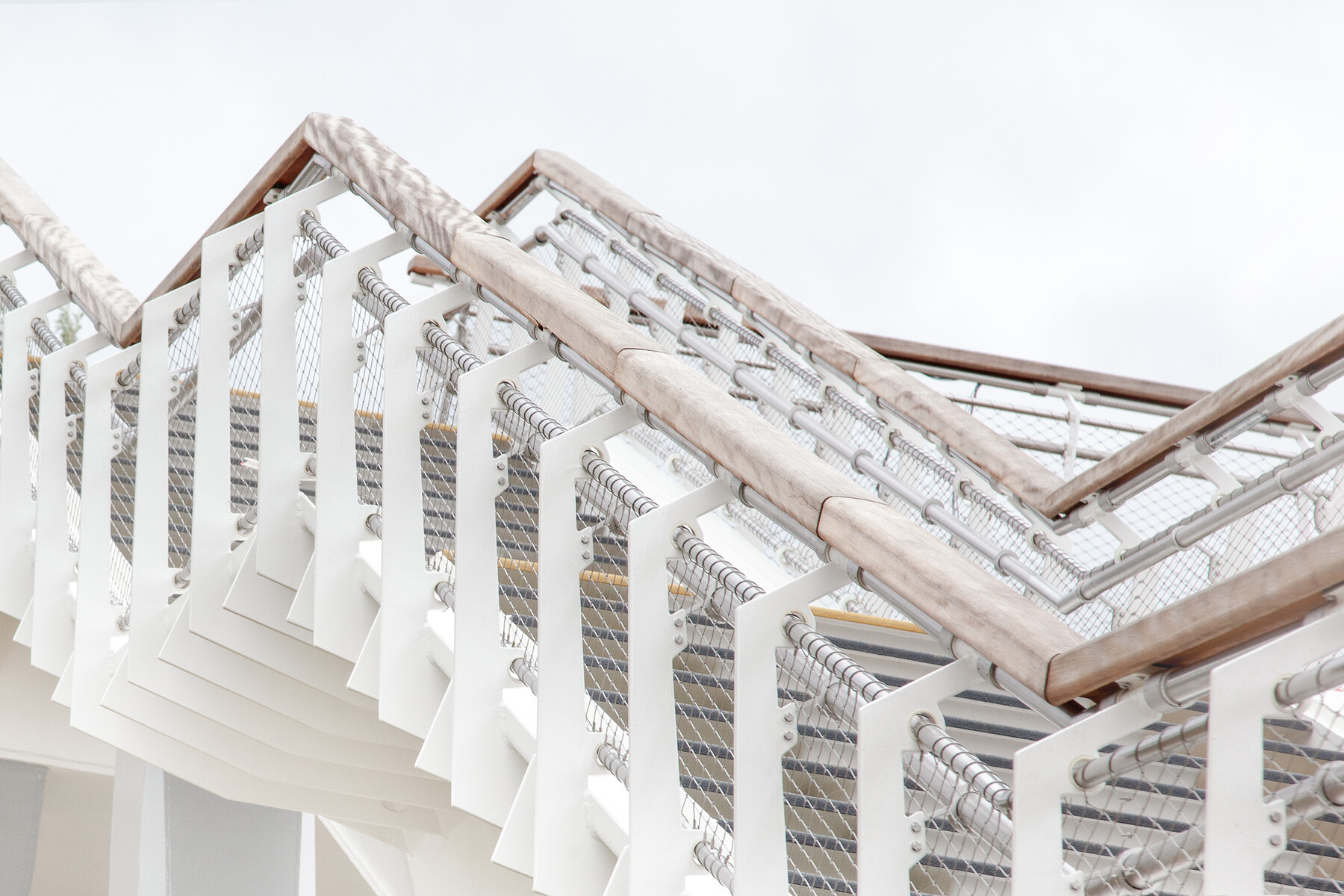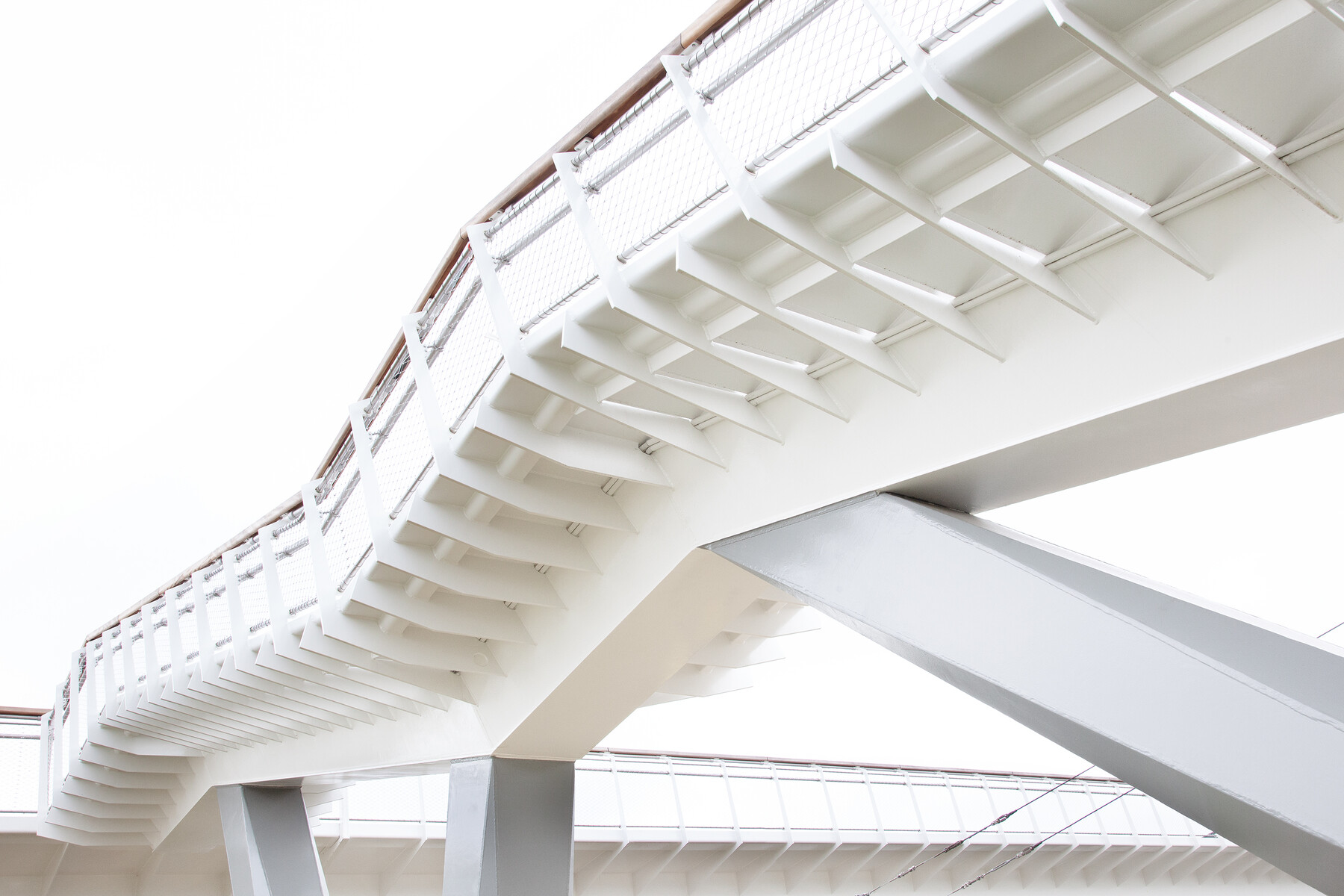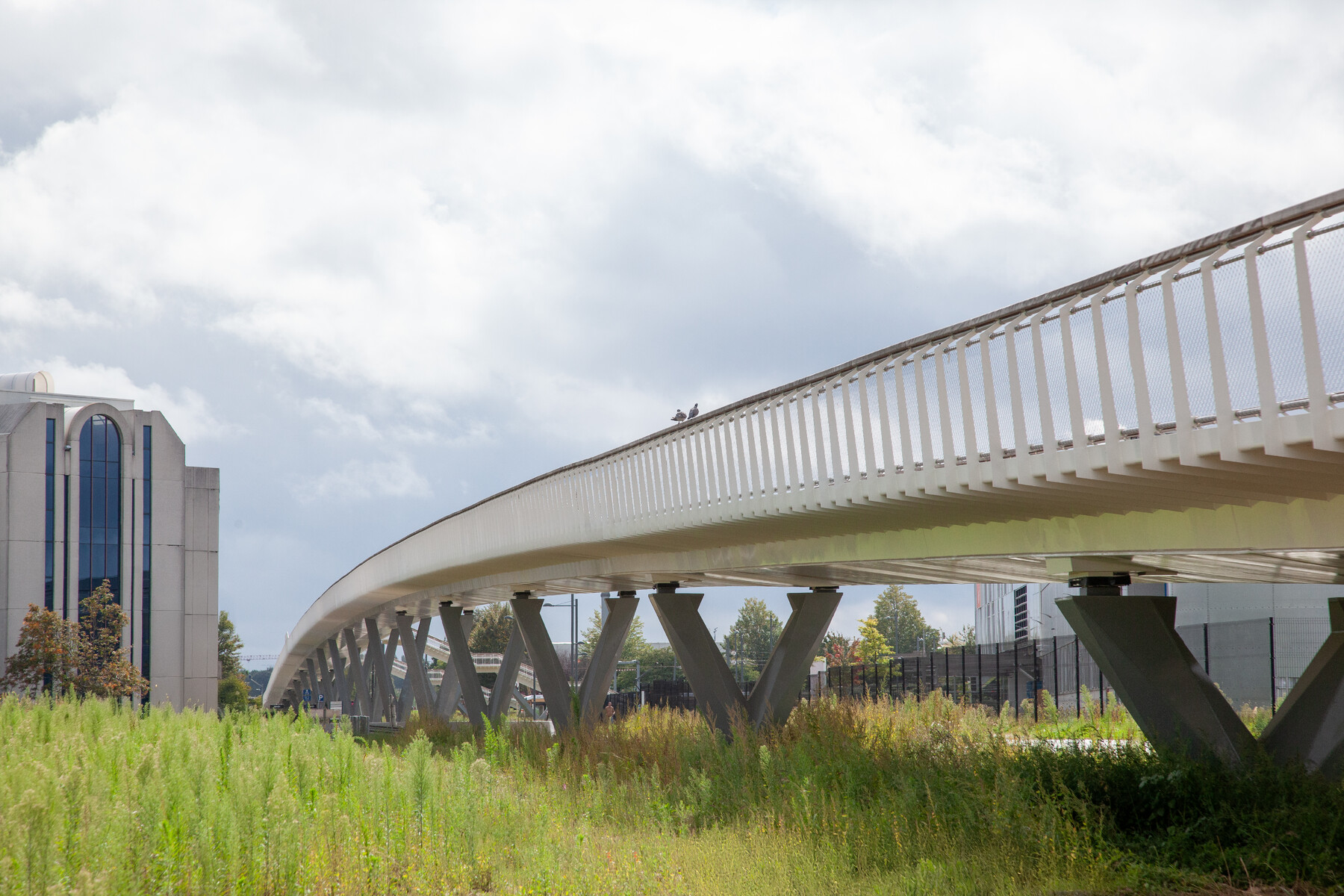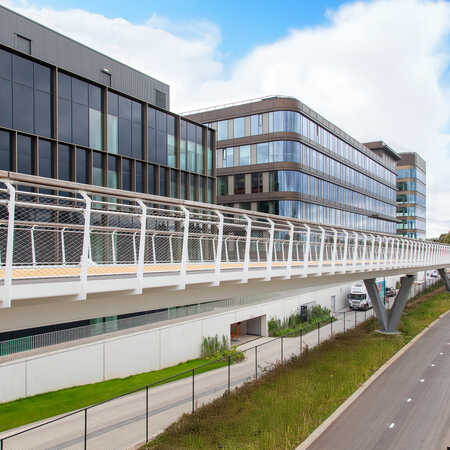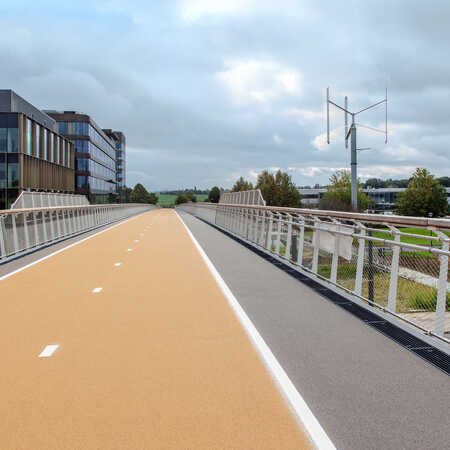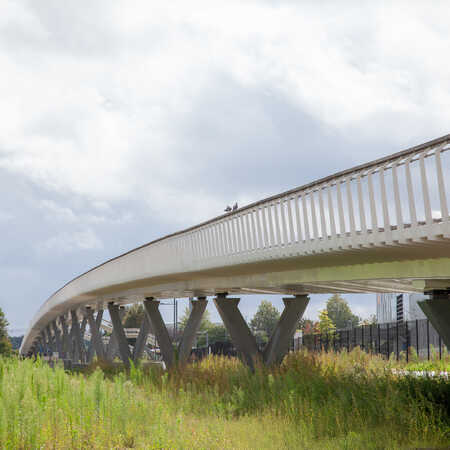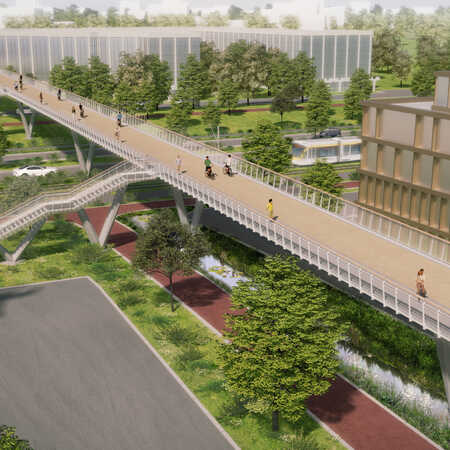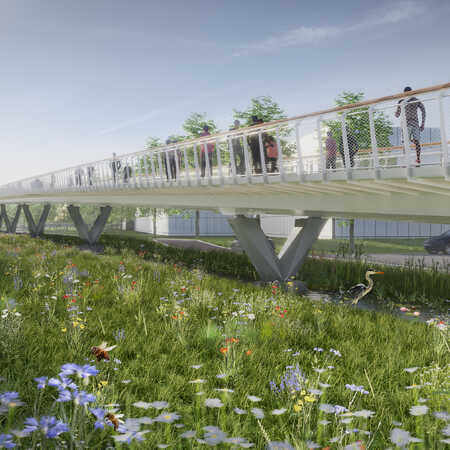As part of a program to provide the city of Brussels with a new network of cycling connections, architectural studio ZJA – as part of the MoVeR0 study group – has received the commission for the architectural design of a bridge across the A201 on a stretch of the motorway called the Leopold III Laan. Here one finds a junction of bicycle highways and public transport, with tram stops nearby of the Brussels public transport and the airport tramline. The bridge also marks the border between the region of Flanders and the Brussels-Capital Region. The bicycle bridge with footpath stretches across more than 500 meters and connects the towns of Machelen and Zaventem at a most critical point.
Long and high
With extended abutments, two landing slopes more than 100 meters in length and a bridge deck of 510 meters long, this is an impressive addition to the urban landscape. The design aims to merge seamlessly with the environment and to create a silhouette of maximum lightness and transparency.
To that end the bridge is designed in steel and painted white, while it rests on V-shaped grey steel columns with rounded edges. In its even, gradual elevation and its dead straight course, the bridge lifts the cyclists across the busy traffic below in one long and flowing gesture. At its highest point above the motorway, where the cars and trams are passing underneath, the deck is 8 meters above street level. The deck of the bridge consists of one solid steel body with all the elements welded together, which means that joints are only necessary at the abutments, saving many hours of maintenance. Heat expansion will inevitably deform the steel structure. However, because the steel columns in the main central part of the bridge are also welded to the deck, these forces are absorbed. Near the abutments, where the columns are shorter and made out of concrete, sliding joints are put in place to absorb the forces of distortion.
The repetition of detail caused by the length and linearity of the bridge, creates a striking visual effect. The protruding ribs under the deck, which support the pedestrian walkways, have a fixed rhythm. They flow into the balusters, which consistently have a vertical orientation to correct the transitions between the landings and sloping parts of the deck. This results in a regular pattern that smoothly follows the ascending line of the deck. An infinity effect emerges and the appearance of the bridge becomes even lighter, floating above the traffic and pointing towards the horizon.
Comfortable details and lighting
In order to remove the obstacle that the A201 is for slow traffic, the bicycle bridge itself must not pose a great challenge for cyclists and pedestrians. Due to the length of the bridge causing a gentle slope, the crossing becomes comfortable for all types of cyclists. For safety reasons, there are railings with wooden bannisters – a friendly detail on an inconspicuous element of the bridge. The built-in lighting is provided by LED projectors that are waterproof and resistant to vandalism, while spreading a clear and focused light on the bridge deck. Between deck and railing, gutters guide the rainwater to bioswales under the bridge. To prevent soil erosion and damage to the bridge’s foundation, the design ensures water is absorbed into the ground locally and does not have a chance to run off. The steps that give access to the bridge at the tram stop are light and slim, yet elongated and lazy enough to comfortably ascend to the bridge deck.
The bicycle path on the bridge has a yellow-brown, light ochre colour and the footpath has the colour of anthracite. This colour scheme ensures a safe and readable layout of the public space. From this long and high bridge a cyclist, on his way to friends, work or school, has an attractive view over a landscape of lawns, wooded hills, buildings, tramlines and roads. The long crossing affords one the time to enjoy the experience of making an efficient gliding swoop over the city and passing over its busy traffic with ease.
Gallery
Award
Winner: First prize BIM Infrastructure Award - Belgian Construction Awards 2021
Architect: ZJA
Client: De Werkvennootschap
Commissioned by: Studiebureau MoVeR0
Studiebureau MoVeR0 consists of Sweco, Arcadis, ZJA, Frank van Hulle, Cluster en Mint
Year: 2019 - Present
Project: #1018
Related
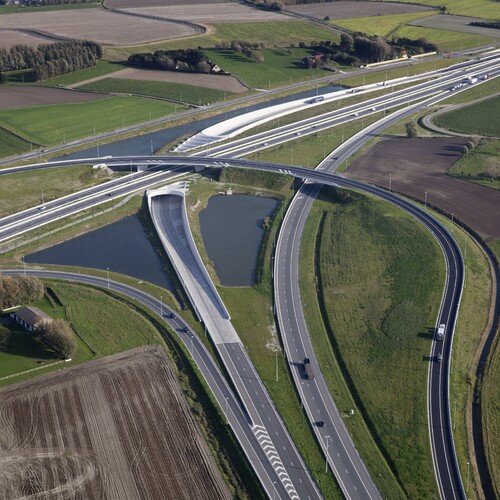
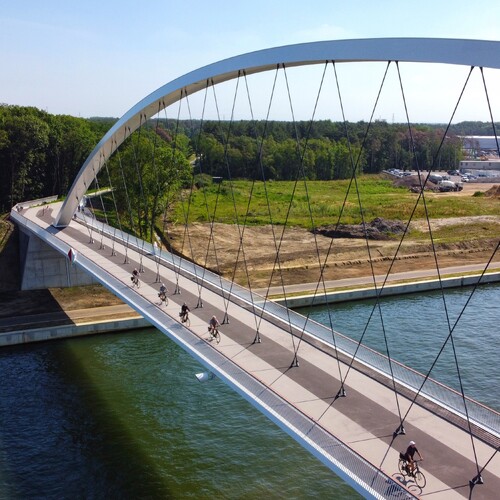
Bicycle bridge, Tessenderlo
A seamless blend of functionality and design
An additional bicycle bridge Cutting through the Flemish landscape near Beringen, just outside the city of Hasselt, the Albert Canal passes…
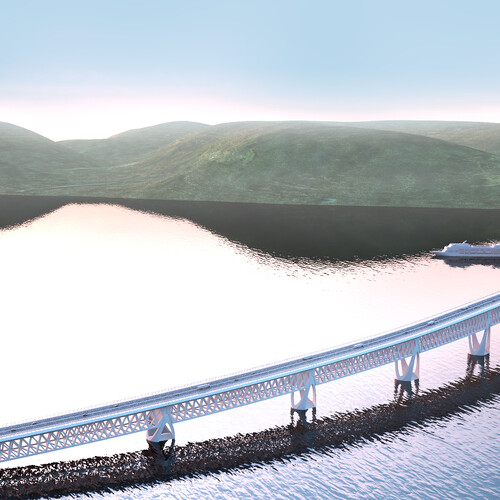
Sognefjord Buoyancy Bridge, Norway
Innovative floating bridge seamlessly integrates with dramatic landscape
Architectural studio ZJA, in collaboration with Iv-Consult and the Technical University Delft developed a design for a spectacular floating…
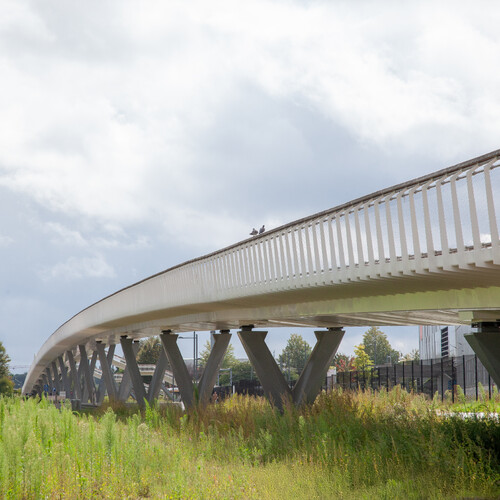
Contribution ZJA Bruggensymposium November 14
On November 14, Ralph Kieft (architect partner at ZJA) and Wiebe Strick (project architect at ZJA) will present the longest bicycle and…
